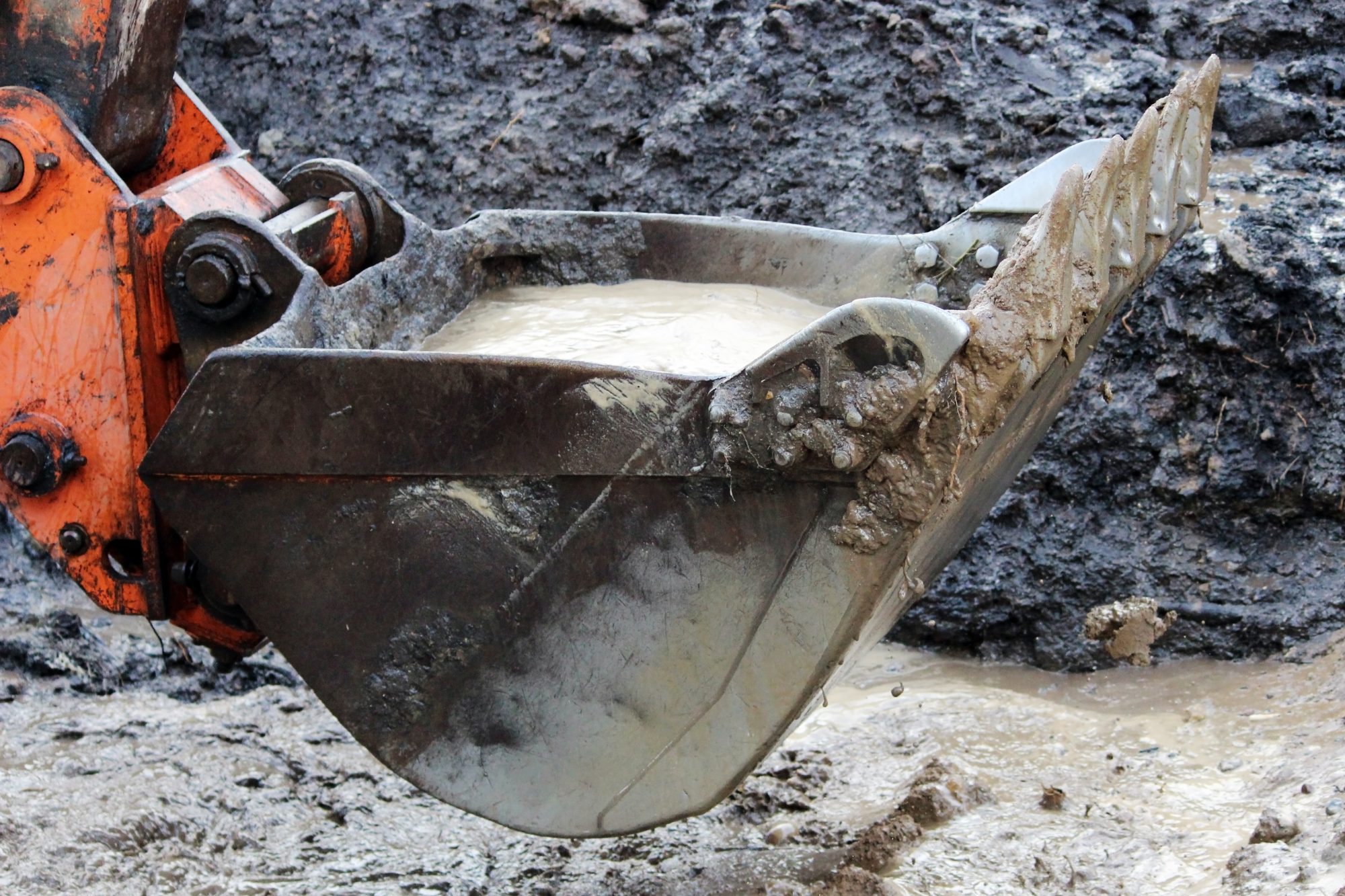Construction site safety is of high importance, especially during inclement weather when wet conditions can cause a number of hazards. Here, Barry Eagle, managing director, GripClad, highlights a number of ways construction sites can be made safer
Without the proper health and safety measures, including anti-slip walkthroughs, construction sites can be exposed to a variety of hazards, which risk your workers becoming workplace injury statistics.
There’s an instant risk of workplace injury when a site’s conditions become worsened by changing weather patterns. Heavy or light rainfall, creating a wet environment, can increase the likeliness of an accident, such as a slip, trip, or fall. When comparing workplace statistics, the construction industry is consistently identified as one of the highest risk sectors or occupations, only matched by those in modern agricultural practices.
What’s more important to consider, even beyond the initial figures of injuries that occur on construction sites, is how almost half of accidents were from falling from a height (according to HSE, or the Health and Safety Executive, that’s almost 47%). When considering non-fatal construction injuries, the same report concludes that there has been an average of 61,000 over the last three-year period. 26% of injuries, as reported by the HSE, were caused by “slips, trips and falls”.
In the absence of proper safety controls, a construction site is naturally risk-averse. But wet, windy, and unpredictable weather can dramatically escalate if worsen, risks on project sites. In the colder months, and during the wintertime, when walkthroughs, stairs, and railings become more hazardous, anti-slip products can help to improve the safety of your site.
Weather is a naturally occurring, daily risk to construction sites, especially when grip and visibility are reduced. But there are best practices you should consider when keeping your construction site safe, which requires ongoing vigilance and the best in flooring materials.
Workplace safety should be a priority
The greatest priority for any construction site will be the health and safety of workers entering, and working on, site projects. In the UK, workplace injuries cost businesses around £5.6 billion every year. But it’s not so easy to calculate the cost of workplace injuries, because an injury – especially where a worker is out for more than 7 days – can mean that your skilled labour is reduced and the completion of a project becomes delayed.
The unfortunate irony with workplace injuries is how they’re often avoidable. Slips, trips, and falls can all be reduced when the right flooring materials are used to enhance grip and visibility. A safe construction site is one that’s aware of the common risk areas and how those evolve with the changing seasons. Risk reduction is only half of the equation; safety is also about empowering workers to take control over their tasks with reassurances that injuries are less likely.
Conduct an inspection of your construction site
Inspections should be both thorough and frequent – that is, regular enough to detect how risks might evolve. A construction site in the summer, for example, will be exposed to different risks than wintertime projects when conditions are wetter. This part of the process is an ideal time to review and assess current risks, but also to spot any site defects, including defective equipment, signage, or flooring that’s badly wearing.
Depending on the severity of risks, site managers should consider delivering a strategy that helps visitors and workers remain safe, such as proper and up-to-date signage. You might even close access to parts of a site if they become affected by spills or water. It’s important to consider how hazards can occur in even the most unlikely places.
Use visible signs to alert to hazards on site
Uncontrollable hazards, or where parts of a site are defective, should be clearly signed to workers, making potential dangers aware to anyone accessing it. Without visibility, hazards can go unnoticed, increasing the risk of injury. A sign that informs site workers when surfaces become wet is a good way to indicate how weather conditions will affect the working conditions of a project.
Relevant signage can also support workers to stay up to date with health and safety changes, policies, and general reminders. These updates could contain mission-critical safety information, such as a reminder about appropriate footwear, weather forecasts, or it could more simply justify why safety policies have been updated. Of course, stakeholder investment in safety policy will spread confidence through a workforce, reassuring it that health is truly a priority.
Anti-slip is critical to give construction workers control of their footing
Inspections and signage are both detailed ways that managers can forecast risks and reduce the likeliness of an injury. But, when it comes to physically altering your site to cope with the harsh realities of UK weather patterns, it should start with floor materials. This is especially critical if your site operates largely outdoors, and exposure to unpredictable weather is a hazard that you’re unsure about managing.
Many materials that you may initially use for flooring will be suitable in the early weeks (and possibly months) of a construction project. But, over time, inferior flooring materials can degrade, creating a hazard in hotspots like roof walkways, catwalks on industrial sites, or stairs.
Sites may even have highly dangerous areas, such as roof access points, where anti-slip will be critical to ensure that workers maintain control over their footing. Materials will need to be lightweight without compromising on robustness, so they can weather frequent wear and tear without the risk of collapsing.
Indoor spaces will equally need to consider materials used to create accessways, ensuring it’s fit for purpose. You will also need to plan ‘transition’ points, where different flooring materials meet. The goal with flooring should be to create a smooth transition between parts of a site without the terrain becoming an obstacle, or the flooring material itself eroding, wearing down, or becoming a distraction.
The materials you might use range from GRP (Glass Reinforced Plastic) grating, anti-slip sheets and panels to stair treads for slippery steps. Site priorities will vary, but there are effective and economical options that give site options for creating safer access points and walkways.
Many anti-slip solutions are discrete (rather than creating a visual distraction) and flexible in how they work to enhance safety measures on site. Heavy-duty sheets and panels, creating a layer of grip, can be fixed onto surfaces to improve accessibility and safety goals on a site. Critically, anti-slip solutions are an unseen workhorse, which lay over potentially hazardous surfaces or high traffic areas to optimise safety.
Anti-slip is a practical yet versatile layer of grip that’s a workhorse in all conditions, but especially in wetter or icy weather, on steep inclined, oily areas, and even high footfall parts of a site.
Ensure entrances and exits are clear and signposted
If you’re planning on addressing high footfall locations, consider entranceways, exit points, and other accessibility routes into a premise. These areas on site should be fitted with anti-slip pads, which will reduce the likelihood of a slip, trip or fall. The success of anti-slip solutions, here, will in part be determined by how hard-wearing and versatile it is, and how well it performs over time. (The resilience of materials to withstand tough conditions is, in part, related to how economical their performance is. If it quickly depletes and needs either replacing or maintaining, then it’s not very cost-effective.)
The final consideration with exits (and, in some cases, entrances) is that proper signage is working with flooring solutions to help workers navigate sites, especially in case of fires or emergencies. Doorways, for example, should serve as exit routes, such as for evacuating due to hazards. Obstructions should be minimalised in these areas and clear, signposted routes should be planned to help the navigation of sites feel safe.
Stairways are common tripping hazards
Stairways, whether interior or exterior, are common tripping hazards. Whether travelling upstairs or downstairs, the risk of a slip – and resulting injury – is increased. This, of course, is both an employee risk and a threat of liability.
In these instances, stair nosings create a rugged, hard-wearing, and non-slip edge that reinforces surface grip.
When the goal is to prevent accidents, the fundamentals of site safety remain invaluable: policies, regular assessment of risks and hard-wearing anti-slip floor materials are some of the best tools of the trade. Beyond this, common sense, training, and signage are also valuable and can shape safety outcomes. But, ultimately, site management comes down to forecasting where risks will happen and understanding the steps to take to reduce the likelihood of an injury.

















